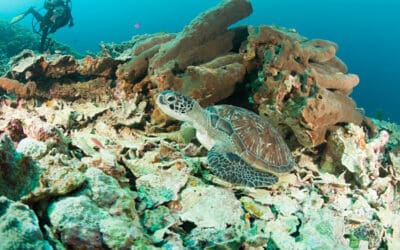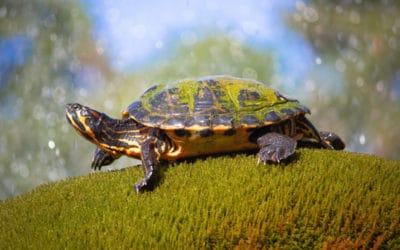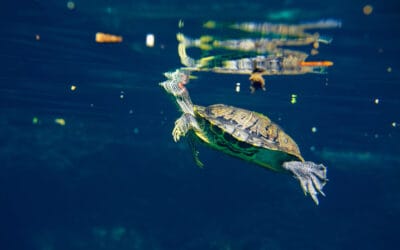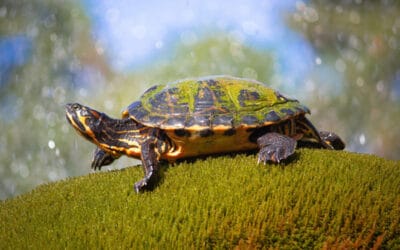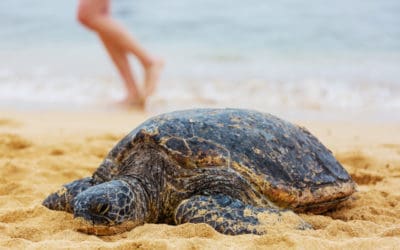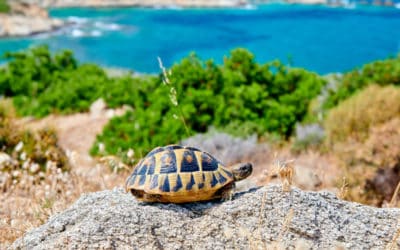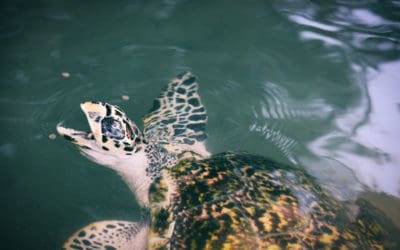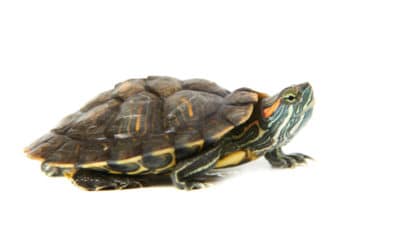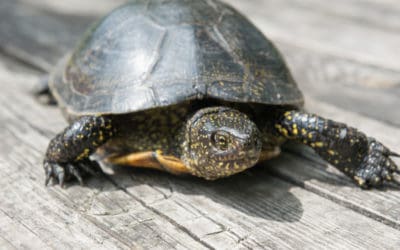Can turtles feel their shell? Here is everything you need to know about their defense mechanism!
Turtles are truly very unique animals. These reptiles possess something no other reptile has, which is a sturdy piece of “armor” that is located on their back. The shell is surely one of the most unique elements and characteristic points of a turtle’s body. However, the majority of users do not even comprehend how crucial this shell really is for these animals. One of the most often asked questions is whether turtles can feel their shell.
To put it shortly, yes! Turtles can feel their shell. It was many times confirmed that being an organic, living tissue, their shell contains a number of different nerve endings. As a result, they feel the touch, the wind, and many other things that happen on their back. Noteworthy is the fact that the shell doesn’t have the same receptors as their skin or the skin of other animals. However, turtles surely feel their shell and things that happen there.
Shell turtles and nerve endings
Before I jump into any detailed information, I would like you to understand that today’s article was prepared with the thought of every turtle owner who wishes to know more about their animals. It is a combination of my own, 20-year old, experience as a turtle owner with research studies that you all can find all around the world. So, up until now I told you that turtles can feel their shell. However, how does it happen? What kind of feeling do they sense as others touch it?
Well, the easiest way to compare the pain turtles will fill when their shell is cracked is when we break one of our extremities. As you can guess from that, it is incredibly painful and as a result, we should definitely not neglect the condition of the turtle’s shell. But how does it happen that they can feel all that?
It is all due to the nerve endings that are located on the outside. Though they focus on transmitting the vibrations, the nerves on the inside of the turtle’s shell are much more complicated and much more sensitive. As a result, these outside nerves will provide turtles with much more complex sensations.
How is the shell constructed?
There are three major parts of every shell, and they are known as the carapace, the plastron, and the scutes. The first one, which is at the same time the biggest piece of the shell of your turtle, is the carapace. This entire piece is located on the back of the turtles.
The second element, plastron, is different from the carapace because of its different material. You see, the former is made of keratin, which is the same chemical compound that the human body uses to help the tissues of hair, nails, and even the outer layer of the skin form.
The last element of their shell is known as the scutes. It is also made of keratin. However, due to different shapes and a wide range of characteristics, they distinguish from each other thanks to different names.
Interestingly, the shells that we all know nowadays haven’t been around with us and the turtles forever. You see, hundreds of millions of years ago turtles looked completely different to what we are accustomed today. Their shell was once incredibly small and could not cover the entire body. Another interesting fact is that thanks to this shell, turtles are known as the only species of reptiles that have both a backbone and a shell -> Why do turtles have backbone?. How?
Well, underneath the shell there is a spine of a turtle. It is inherently formed by multiple connections with turtles’ shells. As a result, it is impossible to detach one from another. This also means that most of the turtle’s backbone is stiff and unlike other reptiles or animals (including humans), they are unable to bend it. The only bendable parts of their spine is neck and tail. As far as the construction itself is concerned, there are around 60 small bones included.
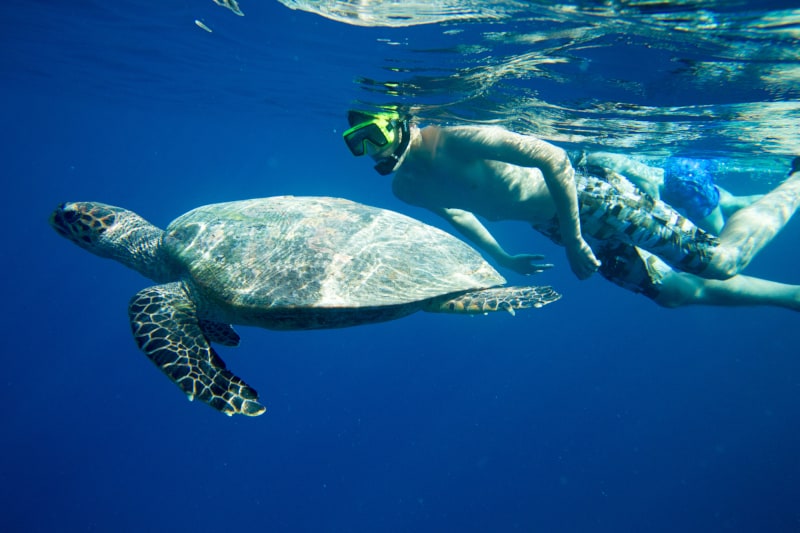
Turtle’s shell and tortoise’s shell – what are the differences?
Interestingly, there are several differences between turtles and tortoises as far as their shells are concerned. For example, scutes of turtles regrow because when in the sea, they are quite often prone to a number of different infections or parasites. On the other hand, tortoises do not have that problem. As a result, they do not shed it on an annual basis as their aquatic or semi-aquatic cousins.
Different behavior can also be witnessed as far as turtle and tortoise growing period are concerned. When a tortoise is getting larger, the whole shell slightly moves in a way it makes a space for a new set of scutes to appear. In the case of turtles, they simply shed the ones that were and when they regrow, they adjust to the new size of the turtle.
Noteworthy is also the fact that tortoises’ shells are a bit different in terms of look. Aquatic and semi-aquatic animals have their shells a bit more aerodynamic for better flow. What is more, their shells are also a bit thinner. On the other hand, tortoises’ shells are more rounded and domed, and are a bit more robust.
Interestingly, in the case of leatherback turtles, their shells are much less durable than other turtles mainly due to the fact that this species tends to dive deep. As a result, enormous pressure could cause damage to the shell. Therefore, despite its durability, it is not as resistant to scratches as shells of other turtles or tortoises.
How do turtles keep their shells in a good condition?
There are dozens of different diseases and troubles that concern the condition of a shell that your turtle may face. And as we know, a healthy shell is of utmost importance, since it is as vital a part of the reptile’s body as an organ. That is why we should do whatever it takes to keep it at the best condition it possibly can be.
Calcium is very important
A high amount of calcium is probably one of the best ways to keep your turtle’s shell healthy. You see, by increasing calcium intake, you make sure that the base components of turtles’ shells, namely calcium and keratin, are at the highest level possible. This is why you should be looking for dietary plans that include a lot of calcium. Obviously, it cannot be dairy products alone. You should be thinking about vegetables like, for example, kale, broccoli, or even aquatic plants, in order to diversify the source of calcium.
Vitamin D
Another important way of strengthening the turtle’s shell is by making sure that there is an area where your turtle can bask in the sun. Our star provides us with UB-V light, which in turn guarantees vitamin D. Without that nutrient, the shell begins to rot. That is why make sure there is enough basking spot and, obviously, that your turtle has access to the appropriate source of vitamin D.
Clean tank
Yet another way of keeping turtles’ shells in the right condition is cleaning the tank of your turtle on a regular basis. You don’t have to do it every day or even once every few days. You can extend the intervals to once a week or twice a week provided that there has been no visible dirt and we have equipped ourselves with a high quality water filter and the right water conditioner. Obviously, don’t forget that it is necessary to change only 30% of water every time you clean.
Water parameters
Though turtles are a bit more resistant to different water parameters than fish, we still have to meet the basic requirements if we wish to keep them safe and healthy. Shell will not be damaged if our water parameters are at the optimum level, which is a pH value between 6.0 and 8.0, no chlorine, no ammonia, and little no no nitrite (the maximum is 0.5). Also, nitrate shouldn’t be higher than 40 ppm.
Submit your review | |

